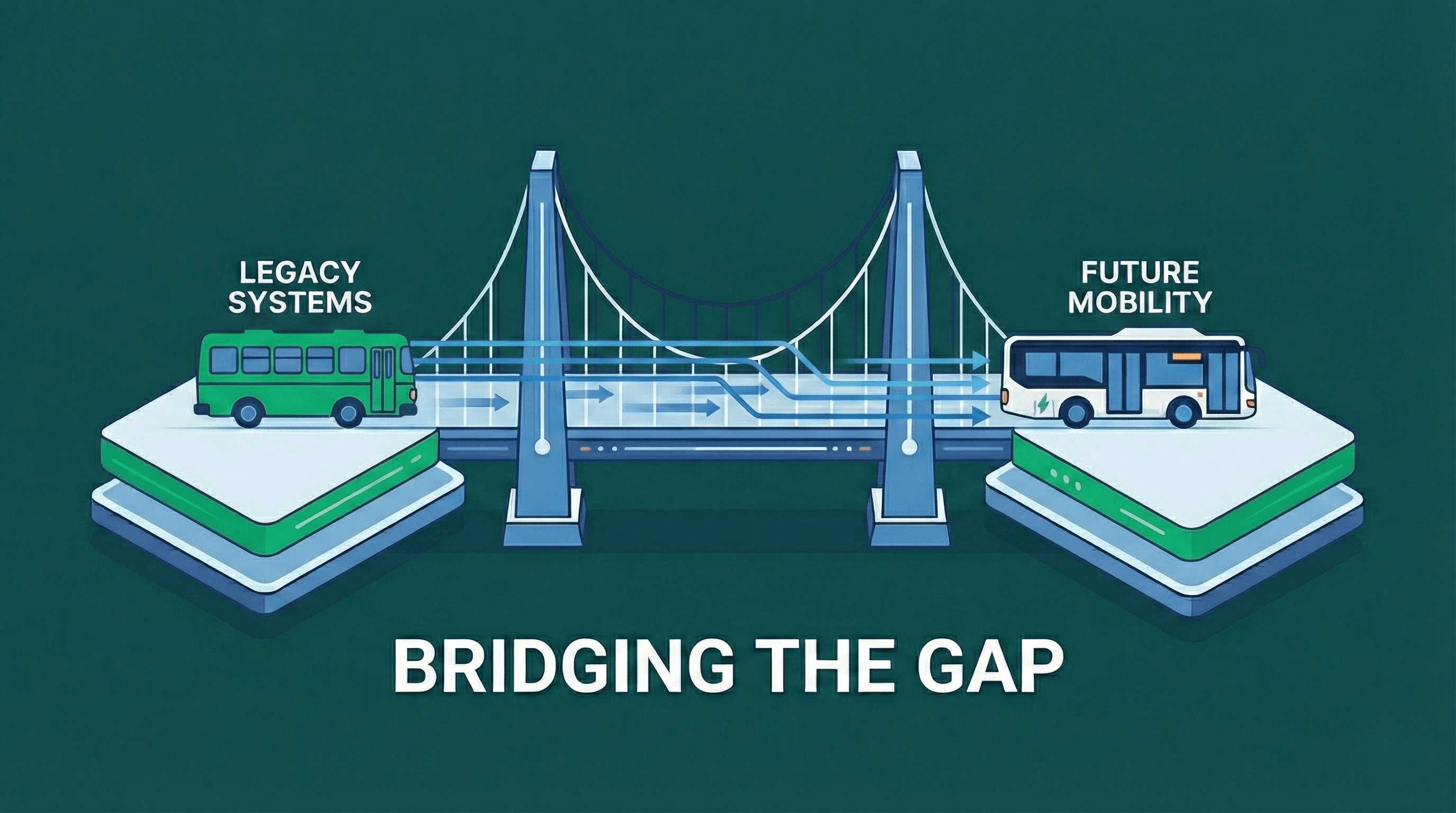Bridging the Gap: What 15 Countries Taught Us About the Future of Public Transport

From Barcelona to the World: A Universal Truth
Fresh off the floor of the Smart City Expo World Congress in Barcelona, the energy is palpable. But beyond the buzz of the event, something more profound emerged from our conversations with public transport leaders from over 15 countries. Whether speaking with operators from emerging markets or established European networks, we discovered a striking consensus: the challenges facing urban mobility are universal, and the hunger for change is immediate.
Geography changes, but the obstacle remains the same. Operators everywhere are striving to regain passenger trust and increase ridership, yet many are held back by a lack of visibility. The industry is at a tipping point, and Barcelona confirmed it.
The Hidden Cost of "Legacy" Infrastructure
For decades, the industry has been slowed down by heavy, expensive, and complex legacy CAD/AVL systems. In our discussions, a recurring frustration emerged: the "hardware trap."
Traditional systems often require massive upfront investment (CapEx) and months, if not years, of installation. In a rapidly changing world, this rigidity is a liability. Networks cannot afford to be locked into proprietary hardware that becomes obsolete before it is fully deployed.In Barcelona, we confirmed a major shift in mindset. The market is no longer looking for infrastructure; it is looking for agility.
The New Standard: 3 Pillars of Modern Fleet Management
Today, Public Transport Authorities (PTAs) and operators are seeking technology that rests on three modern pillars. This is the framework that Pysae advocates for globally:
- Hardware-Agnostic Flexibility: The future belongs to Bring Your Own Device (BYOD) strategies. Operators need to turn any standard smartphone or tablet into a powerful professional tool. This drastically reduces costs and allows for instant replacement.
- Cloud-Native Scalability: Whether digitizing a network of 50 buses in a rural area or optimizing a fleet of 5,000 vehicles in a dense metropolis, the solution must scale instantly. SaaS (Software as a Service) models allow networks to grow without the friction of server maintenance or complex updates.
- API-First Connectivity: Data cannot exist in a silo. To enable true Mobility as a Service (MaaS), real-time data must flow seamlessly between the operator, the authority, and passenger apps (like Google Maps or Citymapper). An API-first approach ensures that interoperability is native, not an afterthought.
Real-Time Data: The Backbone of Passenger Trust
A key takeaway from our global discussions is that High-fidelity Real-Time Passenger Information (RTPI) is no longer a "nice-to-have" feature; it is the mission-critical foundation of any modern network.
Without accurate real-time data, there is no effective MaaS, and no true interoperability between transport modes. Passengers today demand the same level of digital accuracy from their bus network as they do from their ride-hailing apps. Meeting this expectation is the only way to drive the modal shift from cars to public transport.
Pysae: Ready for the Global Stage
This is where Pysae steps in. The enthusiastic reception we received in Barcelona validated our core mission: to democratize access to advanced fleet management technology.
We have moved beyond the proof-of-concept phase. We are now helping regions across the globe leapfrog outdated technologies to embrace a data-driven future immediately.
Ready for the Next Step
The momentum from Barcelona is not just a win for Pysae; it is a signal that the industry is ready for a new standard.The technology is ready. The global demand is here. There is no longer any reason to wait to modernize your network.
Let’s build the future of public transport together.

